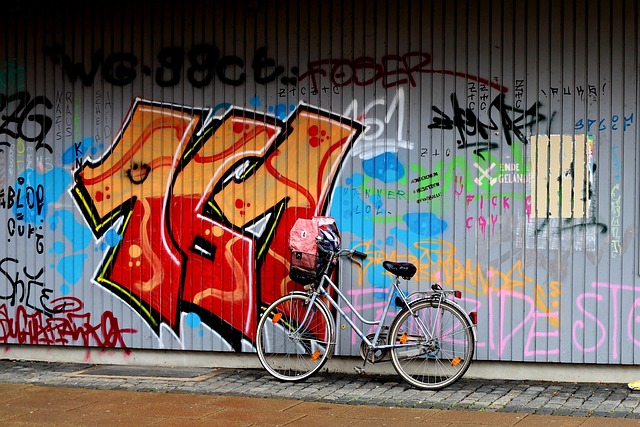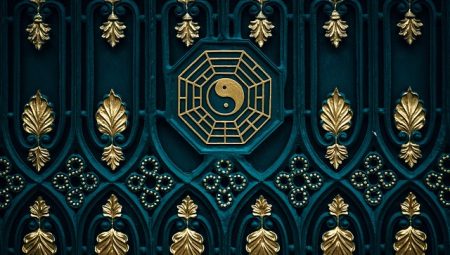In India, for example, the wedding ceremony is a vibrant explosion of colors and rituals. Picture this: the bride wears a stunning red dress adorned with intricate gold jewelry, while the groom arrives on horseback like a modern-day prince. They don’t just exchange vows; they walk around a sacred fire seven times, sealing their bond with seven promises. It’s as if they are dancing around the very essence of love itself!
Now, let’s hop over to Ghana, where a unique twist on marriage exists called the “bride price.” Here, the groom’s family presents gifts to the bride’s family as a token of appreciation. This symbolizes respect and togetherness. It’s sort of like saying, “Thanks for raising this amazing person who is about to be my partner for life!”
And who could forget the quirky tradition of jumping the broom? Widely practiced in African American communities, this custom represents sweeping away the past and jumping into a new life together. It’s a powerful metaphor that paints marriage as a fresh beginning, full of promise and hope.
If you think about it, these customs reflect more than just marriage; they represent the heart and soul of each culture, bringing communities together in celebration. So, which of these traditions resonates with you the most? With such a rich tapestry of practices around the globe, it’s no wonder that love knows no bounds!
From Jumping Brooms to Henna Tattoos: Exploring the World’s Most Fascinating Marriage Customs
Take the jumping of the broom, for instance. It’s not just a fun leap; it symbolizes the couple’s willingness to jump into their future together, leaving behind their old lives. It hails from African American history, where it served as a powerful declaration of unity, especially when marriage was not sanctioned. Now, many couples embrace this tradition for its cultural significance and the joy it brings to their ceremony.
On the other side of the globe, let’s talk about henna tattoos, especially in South Asian weddings. Imagine this: a bride adorned with elaborate floral patterns, each swirl telling a tale of romance and good fortune. The mehndi ceremony isn’t just about beauty; it’s a bonding experience among friends and family, where laughter and excitement fill the air. The deeper the color of the henna, the stronger the love—how poetic is that?
Culture plays a major role in shaping these traditions. Families gather, stories are shared, and laughter resonates, creating a collective memory that lasts a lifetime. Have you ever wondered how many enchanting rituals exist worldwide? From the tossing of bouquets in the West to the crying of women during funerals in Madagascar, the variety is as endless as the love being celebrated. Each custom reflects the heart and soul of a community, inviting us all to explore this beautiful tapestry of shared humanity.
Say ‘I Do’ Around the World: Unusual Wedding Traditions You’ve Never Heard Of
Let’s hop over to India, where the bride’s family often issues a “dowry,” but here’s the twist: the groom has to prove his worthiness by showing off his skills! It’s like a romantic game show where love meets competition. Or consider the quirky leap over a broom in the African-American tradition; it symbolizes sweeping away the past and stepping into a unified future.
Speaking of jumping, did you know that in some Scandinavian countries, the bride and groom may fumble through sham fights during the ceremony? Yup, it’s a playful way to test their endurance and make sure they can handle the trials of marriage. Who knew love could pack such a punch?
Now, let’s sail to the lush landscapes of Italy, where couples might tie the knot on a romantic gondola. Picture this: serenading gondoliers, vibrant canals, and a splash of spontaneity as they say their vows on the water. It’s a dream for those who want their love story to feel like a fairy tale!
Or how about the Russian tradition of “buying” the bride back from her parents? Just imagine the playful negotiations that ensue. It’s a charming way to show commitment, all while engaging loved ones in spirited banter!
Tying the Knot: A Global Tour of the Most Intriguing Marriage Rituals
Now, zip over to Japan, where Shinto weddings are steeped in centuries of tradition. The couple dresses in exquisite kimonos, sharing a ritual drink called “san-san-kudo,” which symbolizes their commitment—three sips for him, three sips for her, and three sips together. It’s a poetic moment that signifies the merging of two families, not just two individuals.
Meanwhile, in the Maasai community of Kenya, marriages are marked by vibrant beadwork and bold colors. The groom must demonstrate his bravery by splurging on cows, while the bride’s family evaluates his worth. It’s a lively negotiation that plays out like a spirited market day, showcasing the couple’s commitment within their community.
And don’t miss the quirky traditions in Scotland, where couples can opt for a “handfasting” ceremony, literally tying their hands together with a cord to signify their union. It’s a literal take on the phrase “tying the knot,” and honestly, don’t you think it adds a beautiful, tangible way to represent their bond?
As you can see, love takes on many forms, each telling a unique story that connects generations and cultures in a beautiful dance of tradition. Isn’t it incredible how these rituals capture the essence of love?
Cultural Vows: How Unique Marriage Customs Reflect Diverse Traditions Worldwide

Then there are the fascinating customs from across the globe. Ever heard of the “jumping the broom” tradition? Embraced in African-American culture, it symbolizes a new beginning and the sweeping away of past troubles. Just imagine leaping into a new life, clearing out the old and welcoming in the joys of a shared future.
And let’s not forget vow renewal ceremonies. These are like the encore performance of a wedding—couples reaffirming their love and commitment, often with new vows that reflect their journey together. It’s a brilliant way to celebrate how far they’ve come and the adventures still ahead.
The Art of Saying ‘Yes’: Captivating Wedding Practices from Every Corner of the Globe
Travel a bit further to a rustic chapel in the countryside of Italy, where couples exchange vows under a tapestry of white roses. Imagine the scent of fresh olive oil and homemade pasta wafting through the air as loved ones feast on delicious local cuisine. It’s about connection, culture, and creating a feast of love!
In Japan, couples partake in the beautiful “San San Kudo” ritual. This lovely practice involves the couple sipping sake three times from three different cups—it’s a way of uniting their families and embracing good fortune. Can you picture the warmth and intimacy in that moment? It’s like blending flavors in a perfectly brewed tea.
Now, let’s hop over to a cheerful beachside celebration in Jamaica, where a drumming circle invites the couple to jump the broom, symbolizing new beginnings and good luck. It’s a vibrant blend of rhythm and joy, as everyone dances and laughs, creating an atmosphere electrified with happiness.
Whether it’s celebrating under the stars in Morocco with mesmerizing lanterns or embracing the sweetness of a pie cutting in an American outdoor wedding, the art of saying “yes” transforms into an extraordinary adventure. Each ritual is a window into the heart of a culture, reminding us that love transcends boundaries, weaving a colorful tapestry that engulfs us all. Isn’t that simply beautiful?
Love Across Cultures: Unveiling the World’s Most Enchanting Marriage Rituals
Over in India, the traditional wedding ceremony, or “Shaadi,” can feel like a grand festival lasting days! Picture intricate henna designs adorning the bride’s hands, family members singing and dancing, and the exchange of the varmala (flower garlands) symbolizing the coming together of two souls. Each ritual is infused with deep meaning, reflecting not just personal unions but community bonds too.
Now, let’s hop to the serene landscapes of Japan where Shinto weddings unfold like a scene from a bamboo forest dream. Couples don elegant kimonos and perform a sake-sharing ritual known as “San San Kudo,” symbolizing the merging of two families. It’s fascinating how these intimate moments capture not just love, but a rich tapestry of history and customs.

When you travel around the globe, each marriage ritual becomes a tapestry of its own—woven with threads of customs, colors, and ceremonies that reflect the heart and soul of the culture. Isn’t it something special to discover just how deep love runs when celebrated in various ways?
Wedded Wonders: Unique and Bizarre Marriage Customs from Different Cultures
Picture this: in Tibet, a fascinating practice called “polyandry” exists, where a woman might have multiple husbands, often brothers. Imagine the family dynamics at play! This custom isn’t just about love; it’s a clever way to keep land within the family and reduce overpopulation. Talk about thinking outside the box!
Now, let’s hop over to Japan, where the tradition of “san-san-kudo” adds a touch of poetry to the union. This custom involves the newlyweds sipping sake three times, each time symbolizing a bond between husband, wife, and their families. It’s a charming mix of celebration and ritual, fostering unity in a single toast!
In some parts of India, there’s a custom where the bride’s family pays a dowry not just in money, but sometimes in property or even livestock! This practice, while controversial, highlights how different societies value marital partnerships. It’s like navigating a treasure map of familial responsibilities and expectations.
And if you think it gets no stranger, let’s explore a village in southern Italy where a wedding takes a backseat to a whimsical tradition called “bambole.” After the ceremony, guests might engage in playful fights, tossing flower petals and charming each other into good-natured chaos. This lively spectacle embodies joy and the spirit of celebration, sparking laughter among all involved.
With so many enchanting and eccentric marriage customs, it’s clear that love is a universal language, but its dialects are as diverse as the world itself!


![How Do Different Cultures Celebrate New Year [Global Guide]? How Do Different Cultures Celebrate New Year [Global Guide]?](https://travel-tips.net/wp-content/uploads/2025/09/how-do-different-cultures-celebrate-new-year-global-guide-1758919069304-450x255.png)

![What Makes Japanese Tea Ceremony So Significant [Cultural Guide]? What Makes Japanese Tea Ceremony So Significant [Cultural Guide]?](https://travel-tips.net/wp-content/uploads/2025/09/what-makes-japanese-tea-ceremony-so-significant-cultural-guide-1758919144390-427x255.jpeg)